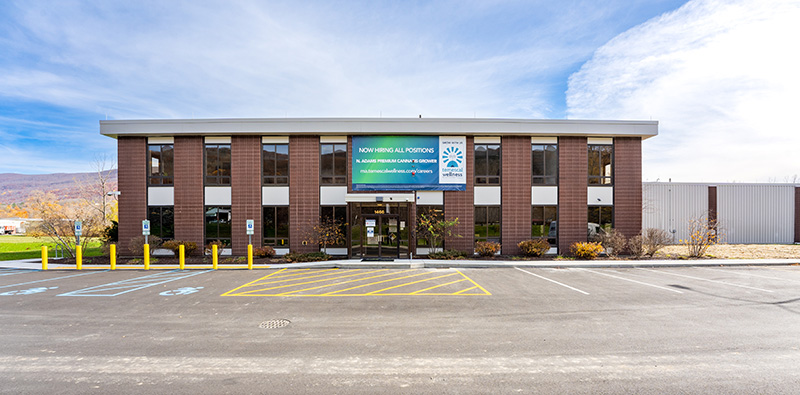Cannabis facility design & construction considerations - by Parker Snyder

Facility design and layout, environmental controls, facility systems, and automation can all impact the functionality and cost of a cannabis facility. Understanding these elements as well as grow operations, production processes, space ratios, and permitting and zoning requirements is essential to making the very best design and construction decisions. Partnering with an experienced contractor that is actively engaged throughout all stages of the project will ensure the most functional and cost-effective cannabis facility.
Facility Design & Layout
Understanding the grow operations and production processes is essential to designing an efficient and functional cannabis facility. Factors such as the number of plants per s/f, height of plants at harvest, and irrigation methods should all be considered as improper ratios of space, irrational flow, and a flawed system design can impact overall productivity and efficiency. Grow room conditioning also plays a major role in the mechanical design of a facility.
Types of Facilities
There are two types of cannabis grow facilities – greenhouses and indoor grow facilities. Greenhouses utilize supplemental heating and lighting to augment the natural sunlight transmitted through glass doors and windows. Indoor grow facilities depend on LED lighting systems contained within a controlled environment which is typically an exterior metal building with interior rooms constructed from insulated metal panels. Both types of facilities depend on well-managed systems to control temperature, humidity, and odors.

Environmental Controls
Whether or not a space has CO2 supplementation or natural ventilation, the type of lighting on the canopy, and the number of grow room tiers can all affect the functionality and design of a cannabis facility. Creating a stable, controlled environment that can produce repeatable results is one of the most important elements of cannabis construction. Cultivation and vertically integrated facilities have to be precisely controlled for humidity, lighting, airflow, and temperature to prevent mold or mildew growth or pest infestation.
Facility Systems
Facility systems such as lighting, electrical service, HVAC, and fire protection are important in cannabis construction. In addition to evaluating options and standards associated with these systems, it is also critical to understand code requirements to avoid design change orders and occupancy delays. For example, in addition to the proper lighting type for efficiency and effectiveness, proper design and layout must be considered to avoid plants getting too much or not enough light.
Automation
Implementing automation equipment into a cannabis facility can be highly beneficial when it comes to overall efficiency and navigating complicated operations. Fully automated irrigation systems to optimize water usage, lighting to regulate intensity, and climate controls such as temperature, air velocity, and humidity can all decrease energy costs. Automated processes can also help minimize potential damage from manual interactions with plants. Collaboration between the design team, contractor, and equipment vendors in a project’s early stages is key to avoiding potentially costly and time-consuming design change orders throughout construction.
Zoning & Permitting
Because regulations vary by city and state, the zoning and permitting process associated with cannabis construction can potentially be long and complicated. However, an experienced contractor with knowledge of the permit process in a variety of national markets can expedite identifying the critical path to eliminate unforeseen delays and begin construction as soon as possible. Additionally, because of the chemicals often used during extraction, obtaining fire protection permits can take longer than usual.
Project Highlight: Temescal Wellness
ARCO recently completed a 71,400 s/f cannabis grow facility for Temescal Wellness in North Adams, Mass. The renovation project included a 61,800 s/f production area, a 23,500 s/f plant canopy, a -20°F freezer and freeze-drying vault, and LED lighting including 1,376 grow lights. The state-of-the-art facility also features automation equipment such as a flower packaging line, fertigation system, movable grow benching, pot filler, a transplanter, and table return crane. When operating at full capacity, the facility is capable of producing up to 300 pounds of marijuana per week.
The Design-Build Advantage
Unlike traditional delivery methods that treat the phases of design and construction sequentially, the design-build process combines quality of design and construction, management of capital expense, and adherence to schedule all under a single point of responsibility. ARCO’s design-build approach allows us to determine construction costs significantly earlier than the traditional design-bid-build method. By working directly with the architect to ensure feasibility and design efficiency, all decisions can be made with full knowledge of their impact on cost and schedule at a much earlier date. ARCO’s unique design-build approach removes the risk of overspending on design and construction by providing clients with a firm price proposal. Preliminary design is completed during the proposal process, and owners benefit now more than ever from the speed at which design-build delivery moves.
Parker Snyder is the director of business development at ARCO National Construction New England, Framingham, Mass.
Nobis Group awards Robinson and Moreira STEM scholarships

Careers in Construction Month focus on training and safety - by Joe Camilo

Ask the Electrician: Is summer a prime time for commercial electrical maintenance?

The rise of incubators and co-working spaces: The latest in life sciences - by Matt Combs









